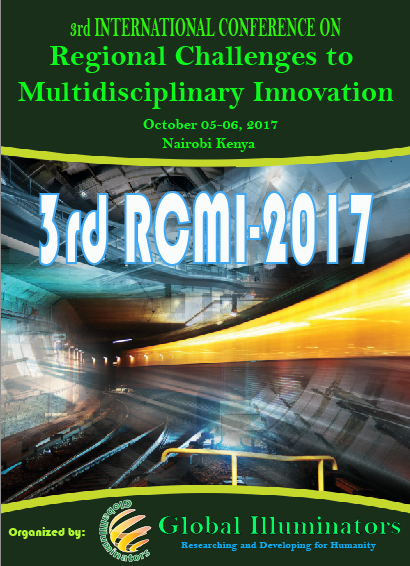
Preface of proceeding
Track: Business, Management and Economic Studies
Fighting Counterfeit Alcohol by Means of New Technological Solutions which Allow for Merchandise Turnover Control and Authenticity Verification: A Case Study
Pages 1-9
Ivan Spirydonau, Gintare Zemaitaitiene, Ivo Hristov
Abstract
Modern tobacco and alcohol industries are extremely susceptible to counterfeiting. Even though governments impose excise taxes as an attempt to control flows of commodities in those industries at the state level, there are still plenty of occurrences when illegal producers infiltrate the market with substandard quality merchandise. This case study will analyze the techniques that can be used by both the alcohol producers and the state to control the flows of merchandise and prevent unauthorized products retail. Three case studies will analyze the problems and solutions of two al-cohol manufacturers and one importer. The research will give useful implications for other industries where there is a clear need to control turnover of commodities. Prod-uct traceability and security are questions of paramount importance nowadays. Coun-terfeiters derive huge profits from illegal trade and support illegal activities such as document fraud, corruption, money laundering and other related crimes. The main task of this research is to not only show how businesses, with the use of innovative technologies, can protect their commodities from being counterfeited or repacked, but also to hypothesize on how a system of product protection and traceability could be a useful instrument in confronting global shadow economy and illegal trade.
Track: Social Sciences and Humainities
Women‟s Success Attributes in Small and Micro Enterprises in Kenya
Pages 10-15
Ondiba Hesborn Andole, Matsui Kenichi, Karanja Joseph Muiruri
Abstract
Women make up nearly half of small and micro enterprise (SME) owners and 40 percent of smallholder farm managers in Kenya. Although these women often face more challenges than the male counterparts largely because of social and legal constraints, Kenyan women have been growingly successful in their businesses. This paper demonstrates some reasons behind their success. It argues that Kenya‟s female entrepreneurs are resourceful in networking activities. We also find that self-employed women in Kenya are respected and trusted by husbands and others. This often motivates them to start businesses and succeed. Self-help groups have increasingly become organized and enabled them to accumulate capital by way of small savings and also help them to gain access to formal credit facilities. All these have facilitated the establishment of enterprises independently without relying on their husbands. We also find that women entrepreneurs do not perceive their business success on the basis of conventional Western economic criteria. They place heavy emphasis on family and employees‟ related measures. Their management style focuses on how their actions affect others. Their work ethics encourages diversity and stresses teamwork. They encourage diversified leadership to energize all workers to actively participate in the production.
The Development Needs Demand of Middle Managers Seeking Support from Human Resource Department in Higher Education Institutions – A Case Study Perspective of Post 1992 New University in UK
Pages 16-33
Mohamed Sameer Mughal, Andrew. D. Ross, Damian J. Fearon
Abstract
Development of staff by Human Resources (HR) department in any organisation is crucial to implement its strategy, operations, goals and for eventual success. In Higher Education Institutions (HEIs) the same principle applies in where the Middle Managers (MM) are drivers who execute organisation vision, mission and contribute towards its desired attainment. MM act as a force between the top and bottom management and run everyday activities keeping a balance between organisational change, input and output activities. In HEIs, the MM job titles at Faculty level include Deans, Head of Departments, Subject leaders and Principle lecturers/Programme leaders. However, it has emerged from contemporary literature, the changes and challenges transpiring in HEIs sector is influencing and generating tremendous pressures and workloads for MM to work effectively and efficiently in their respective roles. Contributing to this distress, are factors such as, an increase in student numbers, bureaucratic structures, accountability, organisation policies, government measures, individual skills…! Moreover, the development programmes provided by (HR) departments in HEIs are non-specific to fit the stanch purpose and needs of MM who require espousal and innovation in their job roles.
Economic Potentials and Threats to Vegetable Amaranth (Amaranthus Cruentus) and Lettuce (Lactuca Sativa) Production using Wastewater of Metropolitan Jakara River in Kano, Nigeria
Pages 34-42
Shu’aibu, A.U, Mohammed, A.B
Abstract
The study determined the profitability and resource-use efficiency of Amaranth and Lettuce production in the wastewater drylands along Jakara River in Kano Metropolis, Kano State, Nigeria. Multistage sampling technique was employed for the selection of the respondents. One hundred and eighty (180) producers of Amaranth and Lettuce were selected. Data were collected with the aid of questionnaire. Data collected were analyzed using descriptive statistics, farm budgeting techniques and regression analysis. The results of the study revealed that the producers of Amaranth and Lettuce had a mean age of 38 years; mean household size of 7 individuals, mean years of education of 5; mean years of experience of 19 and mean income level of N460,567 per annum. The profitability measures have indicated a NFI of N213,965/ha and N294,287/ha; RNI of 0.71 and 0.82; GR of 0.58 and 0.55; and OR of 0.50 and 0.48 for Amaranth and Lettuce respectively, indicating that the production of these crops was profitable. The results also indicated that all the resources used in the production of Amaranth and Lettuce were inefficiently utilized. Land was under-utilized for both crops, while labour, seeds, fertilizer, water and fuel were over-utilized for both crops; pesticide was over-utilized in Amaranth and under-utilized in Lettuce production. The problems of producing these crops include unstable prices of the products, inadequate farm size, soil erosion and pests and diseases attack. The study recommends that the producers should utilize all media and other avenues of obtaining market information about input prices to exploit cheaper farm inputs to enhance their profit levels; and access loans through their associations from the public and private lending institutions to boost their capital. Governments at Federal, State and Local, including International donor agencies should join hands to control erosion in the production areas.
Track: Engineering and Technology Studies
Transforming the Sub-Saharan Electricity Sector: A Focus on Megatrends
Pages 43-49
Abstract
The electricity sector globally is undergoing a transformation as it transitions from a centrally operated entity by authorities-regulators, utilities, system operators and planners-to one that is increasingly driven by a mix of technologies. The sub-Saharan electricity sector is no exception. Africa is forecast to remain one of the world‟s three fastest growing regions in the next few years. In the International Energy Agency‟s central outlook for energy in Africa, the sub-Saharan economy is projected to quadruple in size by 2040.In North Africa electricity access is very high, approximately 95 per cent. Across sub-Saharan Africa only 31.8 per cent have electricity access and in most places where there is access, power cuts and load-shedding are still commonplace. At present the existing infrastructure is insufficient to meet current requirements, not to mention the growth of the coming decades. Among the megatrends specific to sub-Saharan Africa are climate change and water scarcity, Africa‟s dormant natural resources, population growth, skills scarcity, megacities and disruptive technologies such as smart metering, renewable energy and mobile solutions. Currently we have the opportunity of envisioning the possibilities of a transformed electricity sector and the huge impact this will have on the sub-Saharan society. This research seeks to analyze the current status of the sub-Saharan electricity sector and to address how the megatrends can be harnessed to impact the industry for many years to come.

